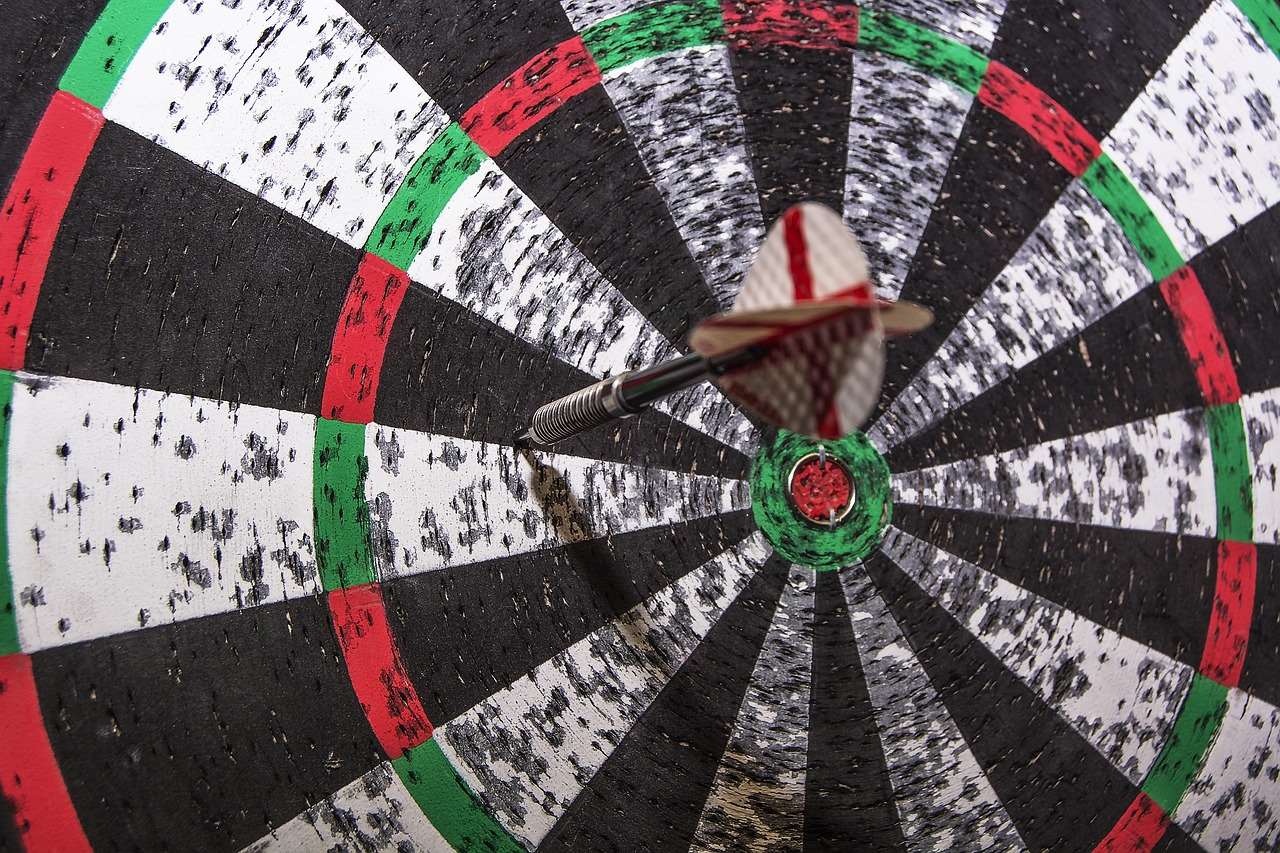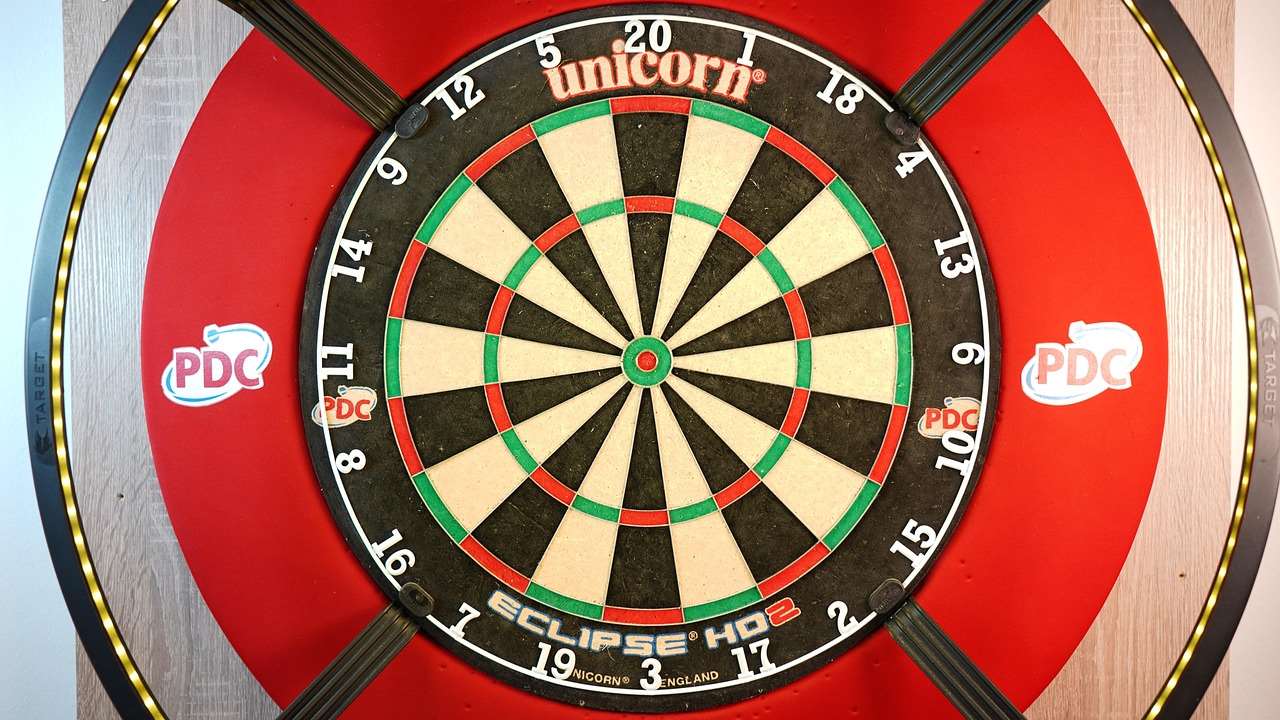Mastering Cricket darts skill path involves strategic aiming, consistent throwing, and a deep understanding of the game’s scoring intricacies, and with a solid path you can get there. This article will guide you through the essential techniques and strategies to elevate your Cricket darts game from beginner to seasoned player.
⚠️ Still Using Pen & Paper (or a Chalkboard)?! ⚠️
Step into the future! The Dart Counter App handles all the scoring, suggests checkouts, and tracks your stats automatically. It's easier than you think!
Try the Smart Dart Counter App FREE!Ready for an upgrade? Click above!
Unlocking Your Potential: Mastering Cricket darts skill path
Cricket, a strategic and engaging darts game, demands more than just hitting the board. Mastering Cricket darts skill path requires understanding scoring zones, tactical gameplay, and consistent execution. Let’s break down the journey to becoming a proficient Cricket player.

Understanding the Cricket Dartboard
Before diving into techniques, familiarize yourself with the Cricket dartboard. The numbers used in Cricket are typically 20, 19, 18, 17, 16, 15, and the bullseye (single and double bull both count). You must “close” each of these numbers by hitting them three times (or a combination of singles, doubles, and triples) before you can score on them. Understanding the layout and common targeting zones for each number is crucial.
- Practice aiming: Regularly practice throwing at each target number to develop accuracy.
- Visualize the board: Mentally map the board and the flight path of your darts for each target.
Developing a Consistent Throwing Technique
Consistency is key in darts, especially in Cricket. A repeatable throwing motion minimizes variance and maximizes your chances of hitting your target. Consider your stance, grip, and release point.
The Stance
Your stance provides the foundation for your throw. Most players adopt either a side-on or angled stance. Experiment to find what feels most comfortable and stable. A consistent stance helps maintain balance and repeatability. Adjusting dart game rules can help you practice.
- Foot placement: Position your lead foot pointing towards the board.
- Weight distribution: Maintain a balanced weight distribution between both feet.
The Grip
The grip significantly impacts your control over the dart. Avoid gripping the dart too tightly, as this can lead to tension and inconsistency. A relaxed grip allows for a smoother release. Experiment with different grip styles to find what works best for you.
- Pressure points: Identify the points of contact between your fingers and the dart.
- Dart balance: Ensure the dart is balanced in your hand to prevent wobbling.
The Throw
The throwing motion should be smooth and controlled. Avoid jerky movements or excessive wrist action. Focus on a consistent release point and follow-through. A controlled backswing contributes to accuracy.
- Backswing: Draw the dart back smoothly, keeping your elbow high.
- Release: Release the dart at the apex of your throw, pointing towards the target.
- Follow-through: Extend your arm towards the target after releasing the dart.

Strategic Targeting in Cricket
Cricket isn’t just about hitting numbers; it’s about strategic targeting. Choosing the right numbers to close and score on can significantly impact your chances of winning.
Closing Numbers Efficiently
Prioritize closing numbers quickly to prevent your opponent from scoring on them. Focus on numbers that are still open for both you and your opponent. Using a Handicap system fun dart games can make the game more enjoyable while you improve.
- Prioritize open numbers: Target numbers that neither you nor your opponent have closed.
- Use doubles and triples: Utilize doubles and triples to close numbers faster.
Scoring Strategically
Once you’ve closed a number, scoring strategically can help you build a lead. Target numbers that your opponent hasn’t closed to maximize your points. Adapting darts games skills is also useful.
- Target opponent’s open numbers: Score on numbers that your opponent hasn’t closed.
- Maximize scoring opportunities: Aim for triples to accumulate points quickly.
Defensive Play
Defensive play is crucial in Cricket. Closing numbers that your opponent is actively scoring on can disrupt their strategy and prevent them from gaining a significant lead.
- Close scoring numbers: Prioritize closing numbers that your opponent is using to score.
- Disrupt opponent’s strategy: Force your opponent to change their targeting strategy.

Mental Game and Focus
Darts is as much a mental game as it is a physical one. Maintaining focus, managing pressure, and developing a positive mindset are essential for success. Mastering Cricket darts skill path is all about how you think, in addition to how you throw.
Maintaining Focus
Distractions can significantly impact your performance. Practice techniques to maintain focus and block out external noise. Develop a pre-throw routine to center yourself before each throw. Consider Darts for mixed ability groups.
- Pre-throw routine: Develop a consistent routine to focus your mind.
- Visualization: Visualize your dart hitting the target before each throw.
Managing Pressure
Pressure situations can be challenging. Learn to manage your emotions and maintain composure under pressure. Practice in simulated pressure environments to build resilience. Modify dart games skill gap.
- Breathing exercises: Use breathing exercises to calm your nerves.
- Positive self-talk: Encourage yourself with positive affirmations.
Developing a Positive Mindset
A positive mindset can significantly improve your performance. Believe in your abilities and focus on your strengths. Learn from your mistakes and maintain a positive attitude, even when facing setbacks. Consider Beginner vs pro dart game rules.
- Self-belief: Believe in your ability to perform well.
- Learn from mistakes: Use mistakes as opportunities for growth.

Advanced Cricket Strategies
Once you’ve mastered the basics, explore advanced strategies to gain a competitive edge. This includes understanding your opponent’s tendencies, optimizing your scoring potential, and adapting your strategy based on the game’s progression.
Analyzing Opponent’s Tendencies
Pay attention to your opponent’s preferred targets, scoring patterns, and weaknesses. Use this information to anticipate their moves and adjust your strategy accordingly. Observing their throws and reactions can provide valuable insights.
- Identify preferred targets: Note which numbers your opponent favors.
- Exploit weaknesses: Target numbers where your opponent struggles.
Optimizing Scoring Potential
Calculate the optimal scoring paths to maximize your points. Consider the remaining numbers, their point values, and the potential for doubles and triples. Plan your throws strategically to achieve the highest possible score. Darts Variants Fun Games can improve your gameplay.
- Calculate optimal paths: Determine the most efficient way to score points.
- Prioritize high-value targets: Focus on doubles and triples to maximize scoring.
Adapting to Game Progression
Adjust your strategy based on the game’s current state. If you’re ahead, focus on defensive play to protect your lead. If you’re behind, take calculated risks to catch up. Being adaptable is key to success.
- Defensive play when ahead: Focus on closing numbers to protect your lead.
- Aggressive play when behind: Take risks to catch up.

Practice Drills for Cricket
Consistent practice is essential for improvement. Implement specific drills to hone your skills and reinforce good habits. These drills should focus on accuracy, consistency, and strategic targeting.
Accuracy Drills
Focus on hitting specific targets repeatedly. This could involve throwing at a single number until you consistently hit it or practicing hitting doubles and triples. Using a Scaling dart game difficulty will make practice easier.
- Target practice: Repeatedly throw at specific numbers.
- Doubles and triples practice: Focus on hitting doubles and triples consistently.
Consistency Drills
Work on maintaining a consistent throwing motion. This could involve throwing a series of darts without focusing on a specific target, simply aiming to repeat your motion.
- Motion repetition: Practice your throwing motion without focusing on the target.
- Rhythm and timing: Develop a consistent rhythm and timing in your throw.
Strategic Targeting Drills
Simulate game scenarios to practice strategic targeting. This could involve throwing at numbers that are open for both you and your opponent or practicing defensive play by closing numbers that your opponent is actively scoring on.
- Game simulation: Practice throwing in simulated game scenarios.
- Defensive play practice: Focus on closing numbers to disrupt your opponent.
Conclusion
Mastering Cricket darts skill path requires dedication, practice, and a strategic mindset. By focusing on consistent throwing, strategic targeting, mental fortitude, and continuous improvement, you can elevate your game and achieve success in Cricket. Remember to practice consistently, analyze your performance, and adapt your strategy as needed. Embrace the challenge, stay focused, and enjoy the journey to becoming a skilled Cricket player. Now, pick up your darts and start practicing!
Hi, I’m Dieter, and I created Dartcounter (Dartcounterapp.com). My motivation wasn’t being a darts expert – quite the opposite! When I first started playing, I loved the game but found keeping accurate scores and tracking stats difficult and distracting.
I figured I couldn’t be the only one struggling with this. So, I decided to build a solution: an easy-to-use application that everyone, no matter their experience level, could use to manage scoring effortlessly.
My goal for Dartcounter was simple: let the app handle the numbers – the scoring, the averages, the stats, even checkout suggestions – so players could focus purely on their throw and enjoying the game. It began as a way to solve my own beginner’s problem, and I’m thrilled it has grown into a helpful tool for the wider darts community.